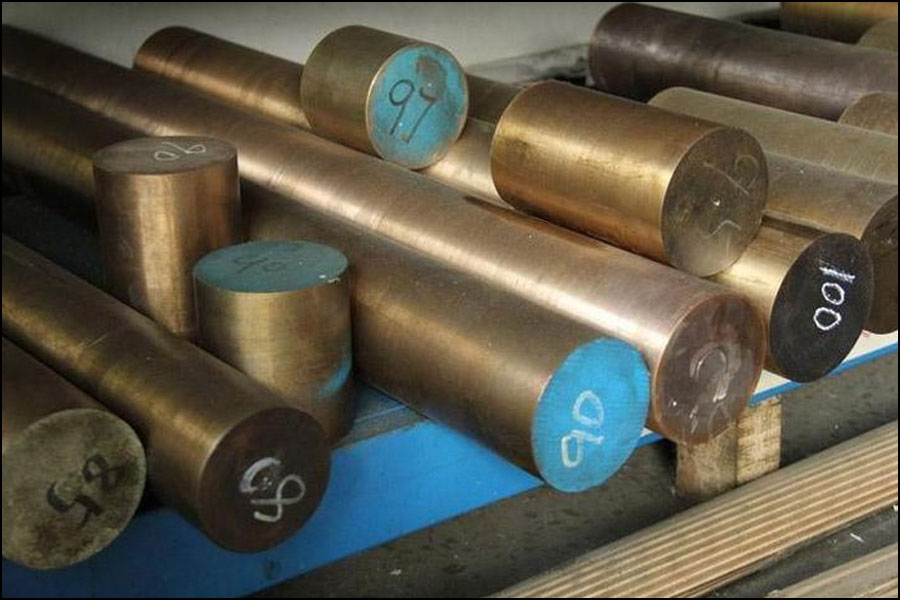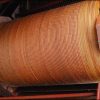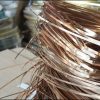
Resistance welding is a reliable, low-cost and effective method for permanently joining two or more pieces of metal together. Although resistance welding is a real welding is a real welding process, no filler metal or welding gas is used. There is no need to remove excess metal after welding. This method is suitable for mass production. The weld is strong and hardly visible.
Historically, resistance welding has been effectively used to connect high-resistance metals, such as iron and nickel alloys. Copper alloys have higher electrical and thermal conductivity, making welding more complicated, but conventional welding equipment usually has the ability to make these The alloy has high quality complete welds. With proper resistance welding technology, beryllium copper can be welded to itself, to other copper alloys and steel. Copper alloys with a thickness of less than 1.00 mm are generally easier to weld.
Commonly used in resistance welding process for welding beryllium copper components, spot welding and projection welding. The thickness of the workpiece, the alloy material, the equipment used and the required surface condition determine the appropriate process. Other commonly used resistance welding techniques, such as flame welding, butt welding, seam welding, etc. which are not commonly used in copper alloys, will not be discussed. Copper alloys are easy to braze.
The key in resistance welding is current, pressure and time. The design of the electrode and the choice of electrode material are very important to guarantee the welding quality. Since there are many materials discussing resistance welding of steel, the several requirements for welding beryllium copper introduced here are based on the same thickness. Resistance welding is hardly an accurate science. Welding equipment and procedures have a great influence on welding quality. Therefore, what is introduced here is only a guide. A series of welding tests can determine the best welding conditions for each application.
Because most of the contaminants on the surface of the workpiece have high electrical resistance, the surface should be cleaned routinely. The contaminated surface will increase the operating temperature of the electrode and reduce the life of the electrode end, resulting in the unusable surface, causing the metal to deviate from the welding area, and the welding joint Caused by false welding or residue. A very thin layer of oil film or preservative is attached to the surface. Generally, there is no problem with resistance welding. The beryllium copper plated on the surface has the least problems in welding.
Beryllium copper with too much grease free or flushing or stamping lubricant can be cleaned with solvent. If the surface is severely corroded or the surface is oxidized under light heat treatment, it needs to be washed to remove oxides. Unlike the very obvious red-brown copper oxide, the transparent beryllium oxide (produced by heat treatment in an inert gas or reducing gas) on the surface of the strip is difficult to detect, but it must be removed before welding.
Solder mask of beryllium copper alloy
There are two types of beryllium copper alloys. High-strength copper beryllium alloys (alloys 165, 15, 190, 290) have higher strength than any copper alloy, and are widely used in electrical connectors, switches and springs. The electrical and thermal conductivity of this high-strength alloy is about 20% of that of pure copper; the high-conductivity beryllium copper alloy (alloy 3.10 and 174) has lower strength, and its electrical conductivity is about 50% of that of pure copper. It is used for power connectors. And relay. High-strength beryllium copper alloys are easier to resistance welding due to their lower conductivity (or higher resistivity).
The beryllium copper obtains its high strength after heat treatment, and the two beryllium copper alloys can be supplied in a pre-heat treatment or awaiting heat treatment state. Welding operations should generally be supplied in the state of heat treatment. The welding operation should generally be carried out after heat treatment. In the resistance welding of beryllium copper, the heat-affected zone is usually very small, and it is not required to heat the beryllium copper workpiece after welding. Alloy M25 is a free-cutting beryllium copper rod product. Because this alloy contains lead, it is not suitable for resistance welding.
Resistance spot welding
Compared with steel, beryllium copper has lower resistivity, higher thermal conductivity and coefficient of expansion. In general, beryllium copper has the same or higher strength than steel. When using resistance spot welding (RSW) beryllium copper itself or beryllium copper and other alloys, use higher welding current (15%), lower voltage (75%) and shorter welding time (50%) . Beryllium copper can withstand higher welding pressures than other copper alloys, but the problem can also be caused by too low pressure.
In order to obtain consistent results in copper alloys, welding equipment must be able to accurately control time and current. AC welding equipment is preferred due to its lower electrode temperature and low cost. A welding time of 4-8 cycles produces better results. When welding metals with different expansion coefficients, inclined welding and overcurrent welding can control the expansion of the metal to limit the hidden danger of welding cracks. The beryllium copper is welded to other copper alloys without the need for tilt and overcurrent welding. If the number of inclined welding and overcurrent welding depends on the thickness of the workpiece.
In resistance spot welding of beryllium copper and steel, or other high-resistance alloys, a better thermal balance can be obtained by using an electrode with a smaller contact surface on the side of the beryllium copper. The electrode material in contact with beryllium copper should have a higher conductivity than the workpiece, and an RWMA2 group electrode is suitable. Refractory metal electrodes (tungsten and molybdenum) have very high melting points. There is no tendency to adhere to beryllium copper. 13 and 14 pole electrodes can also be used. The advantage of refractory metals is their long service life. However, due to the hardness of such alloys, the surface may be damaged. The water-cooled electrode will help control the tip temperature and extend the life of the electrode. However, when welding beryllium copper with very thin cross-sections, the use of water-cooled electrodes can cause rapid metal cooling.
If the thickness difference between beryllium copper and high-resistivity alloy is greater than 5, projection welding should be used due to the rare and feasible heat balance.
Resistance projection welding
Many problems of beryllium copper in resistance spot welding can be solved by resistance projection welding (RPW). Due to its small heat-affected zone, multiple operations can be performed. Different metals of different thicknesses are easy to weld. In resistance projection welding, wider cross-section electrodes and various electrode shapes are used to reduce deformation and adhesion. The problem of electrode conductivity is less than that of resistance spot welding. Commonly used are 2, 3, and 4 pole electrodes; the harder the electrode, the longer the life.
The softer copper alloy is not subjected to resistance projection welding. The strength of beryllium copper is high enough to prevent the premature protrusion from cracking and provide a very complete weld. Copper beryllium can also be projected with a thickness of less than 0.25mm. As with resistance spot welding, AC equipment is usually used.
When welding different metals, the bumps are located in higher conductive alloys. Beryllium copper has sufficient ductility to punch or press almost any convex shape. Including very sharp shapes. The beryllium copper workpiece should be protruding before heat treatment to avoid cracking.
Like resistance spot welding, the resistance projection welding process of beryllium copper generally requires a higher current intensity. It must be energized instantaneously, and the current is large enough to cause the protrusion to melt before it cracks. Adjust the welding pressure and time to control the rupture of the convex part. The welding pressure and time also depend on the geometry of the convex part. Before and after welding, the sudden increase in pressure will reduce weld defects.
Safe operation of beryllium copper
Like many industrial materials, beryllium copper can only cause health hazards when handled improperly. Beryllium copper is completely safe in its usual solid shape, processed finished parts, and most manufacturing operations. However, a small percentage of individuals may cause their lungs to become worse after inhaling fine particles. The use of simple and easy engineering control methods, such as: exhausting operations that generate fine dust, can reduce its hazards to a minimum.
Because the welding melt is very small and it is not open, there is no special danger after the beryllium copper resistance welding process is controlled. If the mechanical cleaning process is required after welding, the work must be exposed to the fine particle environment.






